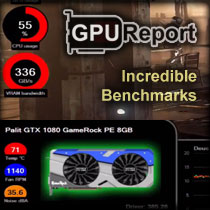Card design, connectors
The GeForce RTX 5080 series gaming graphics cards go on sale today, and simultaneously, we can now publish performance test results. The biggest improvement over the last generation is an interesting performance boost in the most demanding titles at 4K and support for new standards and technologies. The edge is especially gained in demanding ray tracing scenarios, and vice versa.
From the bottom, it looks like any other card. Two axial fans draw air from under the card and push it into the fins of the heatsink. Only the rear bracket lets you know that there is something unusual about the RTX 5080 FE. It’s perforated on virtually all higher-performance cards nowadays and air goes through it. If the cooler pushes too much air through the perforation, it can be a significant source of noise. This was the main reason why cards with radial fans were extremely noisy, and why they were eventually replaced by coolers with axial fans.
Where there used to be a full PCB and later a backplate, you can now see finning. We’re used to it being behind the PCB these days. The design of the card directly from Nvidia, however, surprises by the fact that aslo the half of the card near the rear bracket is passable by air. The PCB just is in the middle of the card.
You’ll notice that you can see through the card not only at the back, but also at the front when you look at it from above. The heatsink is passable under both fans, the only part that is full is in the middle where the PCB is.
The air blows diagonally upwards over the card from the vents on the sides of the frame as well.
The card is about 30.6 cm long, only 3 cm wider than the bracket and takes up only two slots in height.
The configuration of outputs is standard – there are three DisplayPorts and one HDMI. With the last generation, Nvidia was behind AMD in implementing support for the latest DisplayPort interface standards, with the RTX 50 they remedy the situation and the DisplayPorts support the DP 2.1b standard with UHBR20.
There is a pair of screws in the rear wall of the frame that serve as plugs for the metric threaded mounting holes. These also allow the back of the card to be secured to the case to avoid putting too much strain on the PCI Express slot. By the way, there are magnets around the perimeter of the Founders Edition frame. Also on the side. Apparently they make the cooler assembly easier, but they can also hold the screws while you are tinkering with your PC.
The power supply is provided by a 16-pin 12V-2×6 connector, which we already know from the RTX 40 Super series cards.
Nvidia solved the problematic cable bending at the connector by adding an extremely soft adapter.
As with the RTX 5090, I’ll point out that when comparing it to the cables that come with most PSUs, I’d recommend reaching for the included adapter. The wires are like rubber, and compared to most comparatively stiffer cables, you’re less likely to pull out the connector by pushing on the cable, worsening the contact, raising the transient resistance, and causing the connector to overheat and melt.
⠀
- Contents
- RTX 5080 Founders Edition: introduction and parameters
- Card design, connectors
- Test build
- Black Myth: Wukong, Metro Exodus EE, Satisfactory
- Cyberpunk 2077
- F1 24
- UL 3Dmark, Procyon AI, Blender benchmark
- Operating characteristics – F1 24
- Closing summary

























